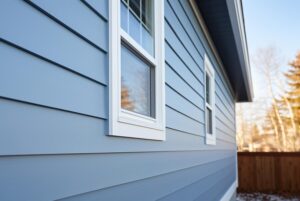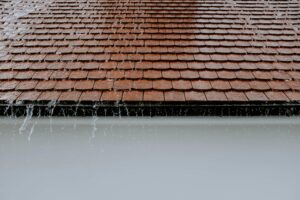Introduction: Siding That Lasts, and Looks Good Doing It
When it comes to exterior remodeling, siding is one of the most important design decisions you’ll make. Not only does it define the character of your home, but it also acts as a barrier against the elements. And since modern siding can last between 20 to 40 years depending on the material and installation quality, selecting a timeless design that won’t go out of style is critical.
But “timeless” doesn’t mean “boring.” In fact, today’s siding options allow homeowners to creatively combine modern house siding ideas with rustic accents to create homes that feel grounded, yet fresh. Whether you’re updating an older home or designing a new build, here are six time-tested siding styles—and how to mix and match them—to create an exterior that will look just as good in 2045 as it does today.
Siding Styles That Blend Classic With Contemporary

Let’s start with a look at popular siding profiles that have stood the test of time. Each option has distinct characteristics, and they can be used alone or in combination for truly personalized results.
1. Traditional Lap Siding
- Price: $-$$
- Durability: High (especially in fiber cement or engineered wood)
- Best Materials: Vinyl, fiber cement, engineered wood
- Style Overview: Horizontal lap siding is the most recognizable and traditional profile, creating clean, linear shadows across the exterior.
Traditional lap siding is a go-to for homeowners who want a low-maintenance look with a strong resale value. It pairs well with both modern and classic homes and provides a neutral backdrop for bolder design accents.
2. Dutch Lap Siding
- Price: $-$$
- Durability: High
- Best Materials: Vinyl, engineered wood
- Style Overview: Similar to traditional lap, Dutch lap has a decorative groove at the top of each board, creating deeper shadow lines.
Dutch lap offers a slightly more elegant and textured look, which adds dimension. It works beautifully in combination with board and batten or shakes for added interest.
3. Board and Batten
- Price: $$
- Durability: High
- Best Materials: Vinyl, fiber cement, wood
- Style Overview: Vertical panels with narrow strips (battens) covering the seams. Originally a farmhouse staple, now a favorite in modern rustic designs.
Board and batten gives height and character to any facade. It’s frequently used on the front elevation or in the gables to balance horizontal siding elsewhere. It blends well with stone or brick, adding a natural, heritage-inspired aesthetic.
4. Shakes
- Price: $$-$$$
- Durability: Medium to high (fiber cement or vinyl alternatives)
- Best Materials: Vinyl, fiber cement, cedar
- Style Overview: Resembles hand-cut wood shingles, usually installed in staggered rows.
Shakes add a warm, craftsman-style texture. They’re best used as accent siding—especially in upper stories, dormers, or entryway bump-outs. Vinyl or fiber cement versions offer the look of real wood without the maintenance.
5. Beaded Siding
- Price: $$
- Durability: High
- Best Materials: Vinyl, engineered wood
- Style Overview: Horizontal siding with a rounded bead at the bottom edge of each board.
This profile was historically popular in southern colonial homes and is making a quiet comeback. Beaded siding provides a subtle detail that elevates the look of a standard horizontal application. It’s ideal for homeowners who want tradition with a small twist.
6. Scallops
- Price: $$
- Durability: Medium
- Best Materials: Vinyl
- Style Overview: Rounded shingle shapes, often installed in gables or small architectural sections.
Scallops offer a nostalgic, Victorian-style charm, making them a great pick for statement details. In modern homes, they can soften harsh lines and add a decorative touch without overwhelming the overall design.
Combining Styles: Mixed Siding Ideas That Work
The key to timeless mixed siding design is balance. Use one style as the dominant siding (often lap or board and batten) and the others as accents. Here are a few fail-safe pairings:
- Board and batten on the gables + lap siding below for a modern farmhouse vibe\
- Dutch lap with scallops in the peaks for traditional charm
- Shakes in upper-level dormers + horizontal siding below to define levels
- Beaded siding around the entryway paired with standard lap for subtle texture variation
These mixed siding ideas allow you to add contrast, highlight architectural features, and create a look that feels both rooted and up-to-date.
Color Schemes That Endure: Timeless, Not Trendy

Once your siding profile is selected, color becomes your most powerful design tool. The wrong shade can date your home quickly, while the right one will look great for decades.
Neutral Tones
Timeless doesn’t mean bland. Charcoal gray, soft white, sand, and taupe are perennially stylish and pair well with stone, brick, and wood accents. They also reflect light differently throughout the day, offering subtle visual interest.
Earth Tones
Sage, clay, terracotta, and forest green bring natural warmth and feel grounded in most landscapes. These tones complement rustic elements like exposed beams or wood trim and are especially effective in rural or wooded settings.
Two-Tone Siding Ideas
Two-tone designs add dimension and depth. For example:
- Light gray lap siding with dark board and batten gables
- White siding with navy or deep green accents
- Warm beige with darker brown shakes
Avoid pastels or overly bold shades that may hurt resale value. According to Modernize, homeowners should consider how color affects curb appeal, long-term trends, and resale.
Regional and Climate Considerations
If you live in a hot climate, be cautious with dark siding colors—they absorb more heat and may increase cooling costs. In colder regions like Minnesota, darker tones can help with passive solar gain and snow contrast. Always pair your color choice with the right material insulation and energy-efficient backing for best performance.
Gable Siding Ideas: Making the Most of Architectural Features
Gables are a natural focal point for stylistic expression, especially when mixing siding types. Here are some gable siding ideas to consider:
- Use board and batten or shakes in the gables to contrast with lap siding on the lower levels
- Add scallops for a romantic, cottage-inspired effect
- Choose two-tone schemes to visually separate rooflines
- Consider trim or decorative corbels to complete the look
Your gables provide a vertical break in your design, making them the ideal place to experiment with texture or color while maintaining a cohesive exterior.
Materials That Support Style and Durability
Great design depends on great materials. Fortunately, modern siding options allow you to achieve nearly any look without sacrificing longevity or performance.
Vinyl
- Pros: Affordable, low maintenance, versatile
- Cons: Can crack or fade over time
- Best For: Lap, scallops, shakes
Fiber Cement
- Pros: Extremely durable, fire resistant, wood-look aesthetics
- Cons: Heavier, more expensive to install
- Best For: Board and batten, lap, shakes
Engineered Wood
- Pros: Lighter than fiber cement, easy to install, authentic wood texture
- Cons: Requires maintenance and proper sealing
- Best For: Traditional lap, Dutch lap, beaded styles
Choosing the right material ensures your beautiful design stands the test of time—both stylistically and structurally.
Conclusion: Enduring Designs for Long-Term Value
Siding is a 30-year decision—so style, performance, and practicality all matter. By combining classic profiles like lap and board and batten with creative accents like scallops or shakes, you can achieve a look that blends modern house siding ideas with lasting elegance.
Choose color schemes that reflect your region, emphasize your architecture, and age gracefully. And don’t forget—great siding starts with the right material and a quality installation.
At Compass Exteriors, we help homeowners craft exteriors that are both beautiful and built to last. Contact us today to explore siding options that combine modern innovation with rustic charm—perfectly tailored to your home.







